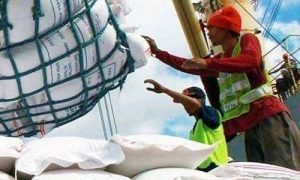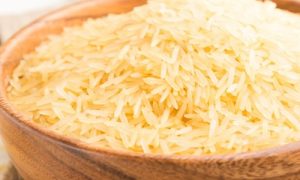Re-imagining rice, a crop that feeds the world

Rice is in trouble as Earth heats up, threatening the food and livelihood of billions of people. Sometimes there’s not enough rain when seedlings need water, or too much when the plants need to keep their heads above water. As the sea intrudes, salt ruins the crop. As nights warm, yields go down.
These hazards are forcing the world to find new ways to grow one of its most important crops. Rice farmers are shifting their planting calendars. Plant breeders are working on seeds to withstand high temperatures or salty soils.
Hardy heirloom varieties are being resurrected.
And where water is running low, as it is in so many parts of the world, farmers are letting their fields dry out on purpose, a strategy that also reduces methane, a potent greenhouse gas that rises from paddy fields.
The climate crisis is particularly distressing for small farmers with little land, which is the case for hundreds of millions of farmers in Asia. “They have to adapt,” said Pham Tan Dao, irrigation chief for Soc Trang, a coastal province in Vietnam, one of the biggest rice-producing countries in the world. “Otherwise they can’t live.”
In China, a study found that extreme rainfall had reduced rice yields over the past 20 years. India limited rice exports out of concern for having enough to feed its own people. In Pakistan, heat and floods destroyed harvests, while in California, a long drought led many farmers to fallow their fields.
Worldwide, rice production is projected to shrink this year, largely because of extreme weather.
Today, Vietnam is preparing to take nearly 250,000 acres of land in the Mekong Delta, its rice bowl, out of production. Climate change is partly to blame, but also dams upstream on the Mekong River that choke the flow of fresh water. Some years, when the rains are paltry, rice farmers don’t even plant a third rice crop, as they had before, or they switch to shrimp, which is costly and can degrade the land further.
The challenges now are different from those 50 years ago. Then, the world needed to produce much more rice to stave off famine. High-yielding hybrid seeds, grown with chemical fertilisers, helped. In the Mekong Delta, farmers went on to produce as many as three harvests a year, feeding millions at home and abroad.
Today, that very system of intensive production has created new problems worldwide. It has depleted aquifers, driven up fertiliser use, reduced the diversity of rice breeds that are planted, and polluted the air with the smoke of burning rice stubble. On top of that, there’s climate change: It has upended the rhvthm of sunshine and rain that rice depends on.
Perhaps most worrying, because rice is eaten every day by some of the world’s poorest, elevated carbon dioxide concentrations in the atmosphere deplete nutrients in each grain.
Rice faces another climate problem. It accounts for an estimated 8% of global methane emissions. That’s a fraction of the emissions from coal, oil and gas, which together account for 35% of methane emissions. But fossil fuels can be replaced by other energy sources. Rice, not so much. Rice is the staple grain for an estimated 3 billion people. It is biryani and pho, jollof and jambalaya – a source of tradition, and sustenance.
“We are in a fundamentally different moment,” said Lewis H. Ziska, a professor of environmental health sciences at Columbia University. “It’s a question of producing more with less. How do you do that in a way that’s sustainable?
How do you do that in a climate that’s changing?”















